Arthur Roessler
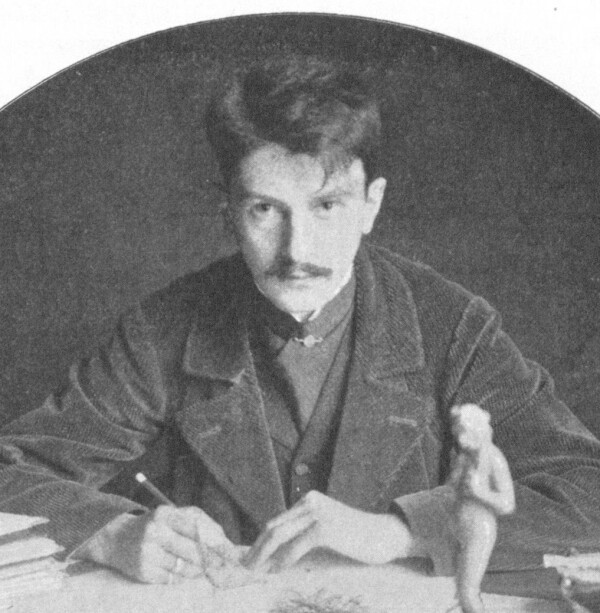
Arthur Roessler in his study in Munich, fall 1900, in: Eduard Engels: Arthur Rössler, in: Sport und Salon. Illustrirte Zeitschrift für die vornehme Welt, 17.01.1901, S. 13.
© ANNO | Austrian National Library
An art critic and writer, as well as a passionate art collector, Roessler wrote numerous essays and several artists’ monographs, including a publication about Gustav Klimt. He was good friends with Egon Schiele and is regarded as his discoverer and patron.
Arthur Roessler was born in Vienna on 20 February 1877, the son of the engineer and chemist Simon Roessler and his wife Josefa, née Brauner. After studying philosophy, literature, and art history at the University of Vienna, he traveled throughout Europe. Around 1898, Roessler finally moved to Munich, where he worked as a freelance journalist for the Allgemeine Zeitung, among others, and held the position of editor of the Münchener Zeitung from 1899. He also worked as a correspondent for the Vienna-based magazine Sport & Salon, for which he mainly reviewed exhibitions at the Munich Glass Palace and shows at the Munich Secession. As early as 1901, the then 23-year-old writer was praised for the works he had published by then, Der Sturm, Höchste heidnische Seligkeit, and Es gibt solche Menschen.
Later in his career, Roessler’s focus of interest shifted to the field of art criticism and artists’ monographs. In his articles in the Münchener Zeitung, for example, he commented positively upon the work of the modern artist community Neu-Dachau, whose members Adolf Hölzl and Ludwig Dill were personal friends of his. This affinity led Roessler to publish a volume entitled Neu-Dachau. Ludwig Dill, Adolf Hölzel, Arthur Langhammer in 1905 in the context of a series of monographs edited by Hermann Knackfuß. From 1908 on, Roessler wrote for international art journals like Kunst und Künstler, Die Kunst für Alle, and Erdgeist. He also worked as an art editor for the Arbeiter-Zeitung in Vienna and, later on, for the Wiener Neueste Nachrichten.
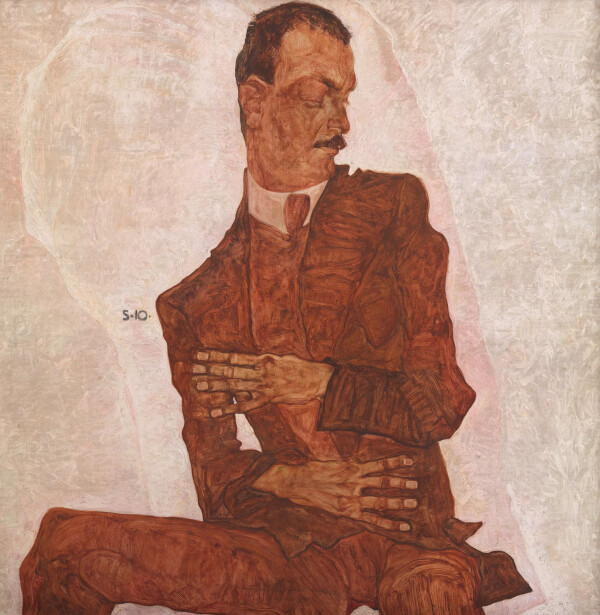
Egon Schiele: Arthur Roessler, 1910, Wien Museum
© Wien Museum
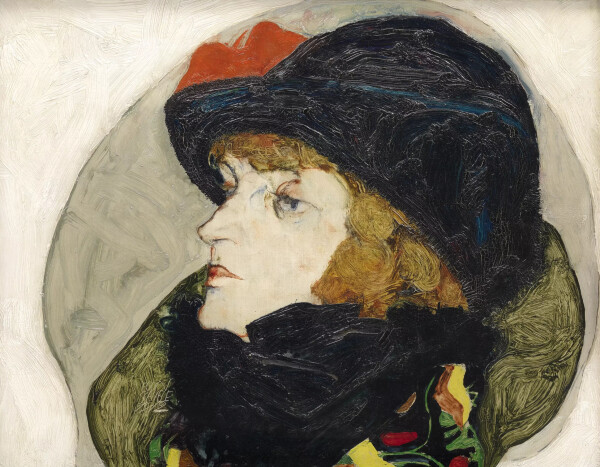
Egon Schiele: Portrait of Ida Roessler, 1912
© Wien Museum
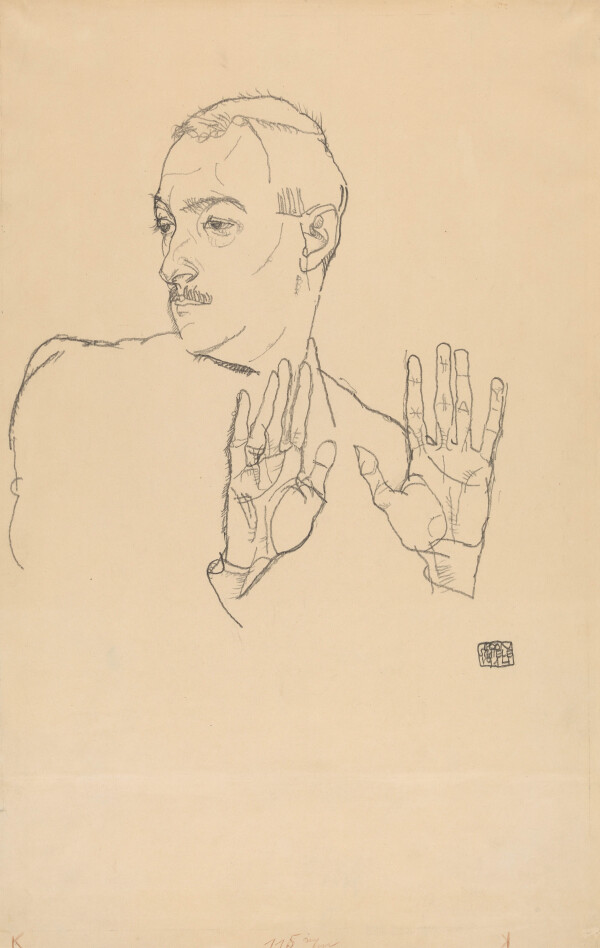
Egon Schiele: Portrait of Arthur Roessler, 1914
© Wien Museum
Patron and Art Dealer
With the help of Adolf Hölzel, Roessler became the business manager of the Miethke Gallery in Vienna in 1905, which was owned by Klimt’s close friend Paul Bacher and managed by Klimt’s friend and colleague Carl Moll. Bacher was impressed by Roessler’s writing skills, but had reservations as to his suitability for the art trade:
“These newspaper articles are indeed so marvelous that my old worries seem to be returning that it would be difficult for you to get used to an art dealer’s entirely unfamous, quiet life. But let’s hope the best for our future collaboration.”
In any case, Roessler was given the job and therefore moved back to Vienna, his hometown, in the summer of 1905. He worked at Galerie Miethke until 1907, curating exhibitions, writing catalog entries, and managing the purchase of artworks, including paintings and drawings by Klimt. However, Bacher’s fears would eventually come true, as Roessler left the gallery in the spring of 1906 due to salary disputes. However, the contact with his former employer did not break off entirely. In 1907, Roessler purchased a drawing by Klimt from Miethke worth around 1,300 euros. At the beginning of 1908, he also sold a Klimt drawing to the art dealer Paul Cassirer via the gallery.
From then on, Roessler worked mainly as a freelance writer. He published numerous monographs on artists, including Rudolf von Alt (1909), Josef Danhauser (1911), and Ferdinand Georg Waldmüller, the latter of which he co-authored with the art dealer Gustav Pisko in 1907.
Roessler met Egon Schiele and Anton Faistauer at Pisko’s in 1909 during an exhibition of the Neukunstgruppe. While in Munich Roessler had established contacts with the Neu-Dachau art group and promoted them almost propagandistically through articles and reviews, Roessler now took care of the young artists of the Neukunstgruppe in Vienna. He saw in them something like a succession to Klimt and recognized in them a proximity to the Kunstschau movement, which he certainly welcomed:
“Namely Klimt’s influence is evident. As long as such an influence can be regarded as fruitful, nothing is to be said against it. It would only give rise to worries if it lulled one into empty imitation. But if I can freely choose between an epigone of Griepenkerl and an epigone of Klimt, I decide in favor of Klimt without hesitation, because a ‘Klimt-Kerl’ [note: this is a game on words, the German word ‘Kerl’ meaning ‘fellow’ or ‘lad’ in English; Griepenkerl was the name of a conservative professor at the Academy of Fine Arts] is indeed a different lad than a Griepenkerl.”
Roessler made friends with the artists Faistauer and Schiele, who were almost his age. The art critic recognized Schiele as a particularly exceptional talent worth promoting, and he supported him financially through both buying his works and sending him money directly. Roessler, an experienced connoisseur of the art market, also advised Schiele as to the rise of his market value. On the other hand, Schiele painted several portraits of his friend and mentor, and of the latter’s wife, Ida Roessler, some of whom he gifted to the couple. Roessler also pushed Schiele’s career by introducing the young artist to collectors like Carl Reininghaus and Oskar Reichel. Today both are considered important patrons of Schiele.
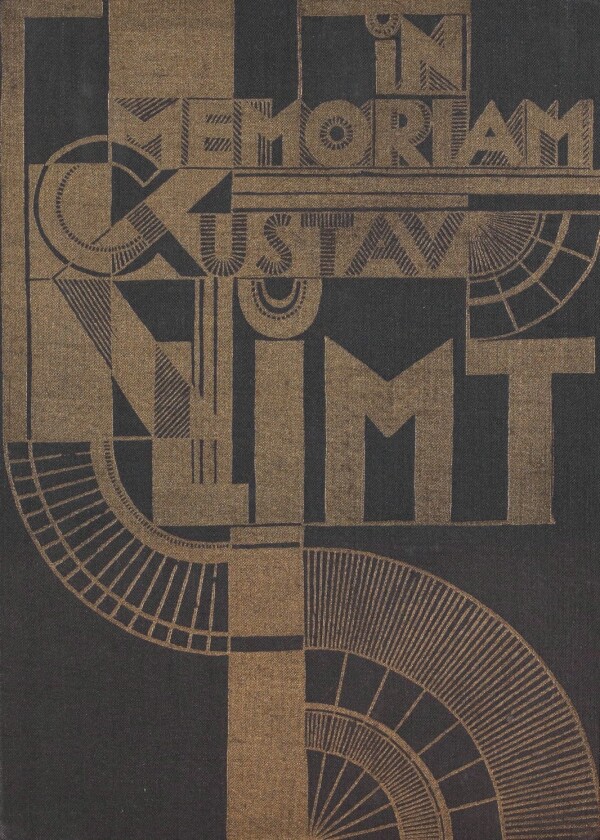
Arthur Roessler: In Memoriam Gustav Klimt, Vienna 1926.
© Klimt Foundation, Vienna
Associations for the Promotion of Art and Artists’ Monographs
In 1912, Roessler collaborated with Gustav Klimt, Josef Hoffmann, Otto Prutscher, and Kolo Moser on the establishment of the Austrian Werkbund. In 1924 he was elected to the association’s board, where, among other things, he was jointly responsible for organizing the Austrian section of the Paris Arts and Crafts Exhibition in 1925. During World War I, Roessler served for the most part at the Imperial-Royal War Archives in Vienna.
Egon Schiele, Gustav Klimt, and Otto Wagner died in 1918. The death of these great artists hit Roessler hard. The art writer responded to the loss with a considerable number of monographic publications. He was apparently anxious to preserve the legacy of the artists he admired. On the occasion of Klimt’s death, he wrote a commemorative essay for the artist. In the same year, he published Kritische Fragmente, a collection of essays on Schiele, Faistauer, Albert Paris Gütersloh, Felix Albrecht Harta, and Ernst Wagner, among others. Within a very short period of time, four publications on Egon Schiele appeared. This was followed by a Klimt monograph entitled In Memoriam Gustav Klimt in 1926.
Roessler’s efforts to promote modern art continued even after the premature death of Schiele, his protégé. In 1919 he founded the House of Young Artists on the premises of the former Miethke Gallery, as well as the Avalun publishing house. In 1923 he was a founding member of the Society for the Promotion of Modern Art in Vienna and a board member of the Eckart Society for the Promotion of Fine Arts, which awarded the Arthur and Ida Roessler Prize in 1929. After 1926, Roessler increasingly lectured at the Volkshochschule Urania, a center for adult education in Vienna, and in 1934 he became an art editor for the RAVAG radio station, which meant that his art reviews could regularly be heard on air.
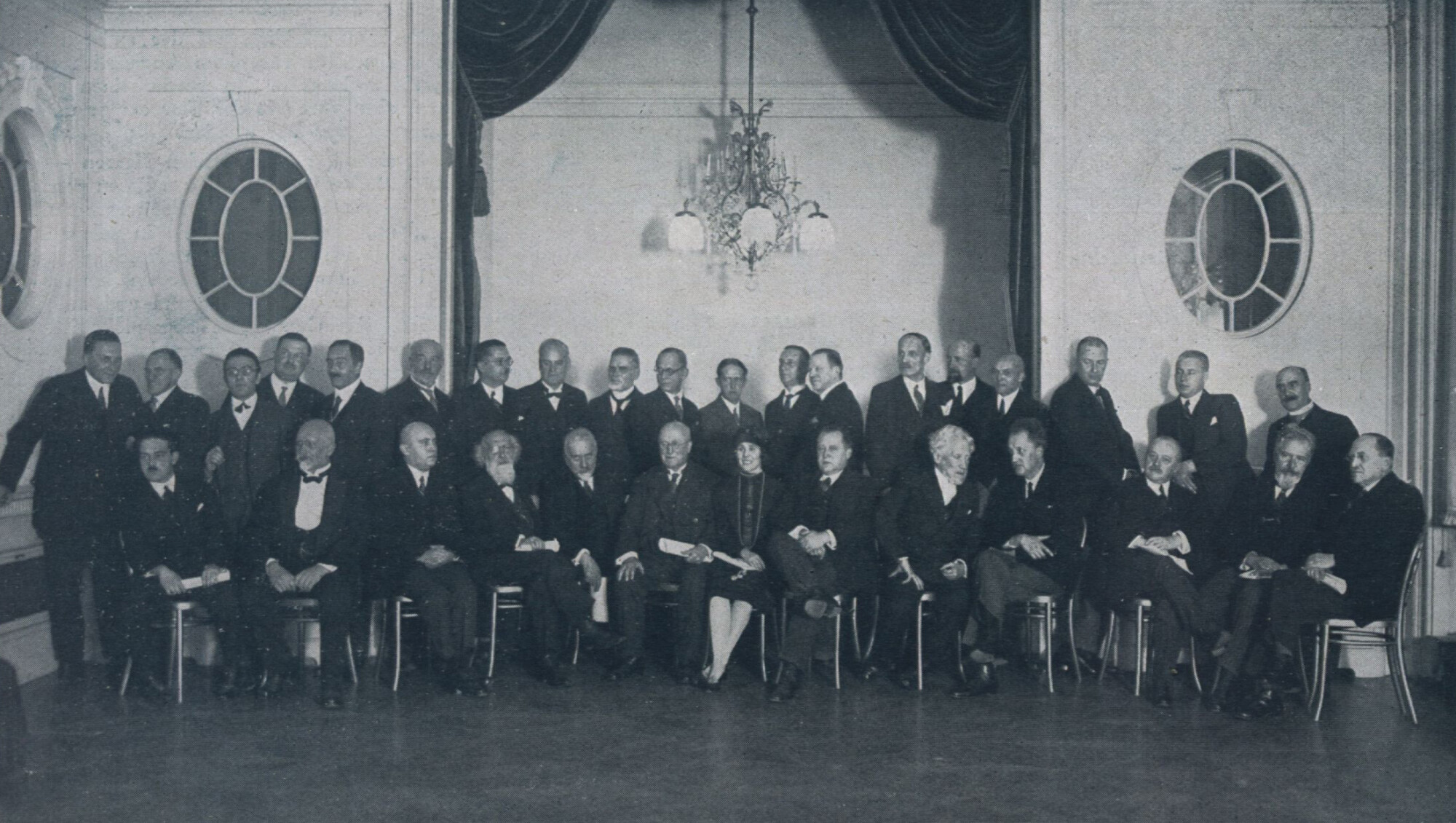
Board of the Eckart Association for the Promotion of Fine Arts, Arthur Rössler third from the right in the front row, in: Moderne Welt, 9. Jg., Heft 1 (1927).
© ANNO | Austrian National Library
Roessler was repeatedly honored for his work. In 1927, on his 50th birthday, he received the University of Vienna’s Gold Medal of Honor, and in 1937, on the occasion of his 60th birthday, he was awarded the Silver Medal of Honor for Services to the Republic of Austria, as well as the title of honorary professor.
Ida and Arthur Roessler spent World War II in Vienna. After 1945 he worked as a freelance journalist and writer. However, the job situation was poor and the couple was forced to sell more and more items from their art collection. In 1955, due to his poor financial situation, Arthur Roessler entered into an agreement with the City of Vienna that his collection, which at the time comprised 1,400 works of art, would pass into the city’s possession in return for an annuity to be paid during Mr. and Mrs. Roessler’s lifetime. Arthur Roessler died on 20 July 1955.
Literature and sources
- Universität Wien. 650 plus- Geschichte der Universität Wien. Arthur Roessler. geschichte.univie.ac.at/de/personen/arthur-roessler (04/14/2020).
- Österreichische Akademie der Wissenschaften. www.oeaw.ac.at/acdh/oebl/biographien-des-monats/februar-2017/ (04/14/2020).
- Wien Geschichte Wiki. Arthur Roessler. www.geschichtewiki.wien.gv.at/Arthur_Roessler (04/14/2020).
- BR. Kultur. www.br.de/themen/kultur/inhalt/kunst/egon-schiele-jugendstil100.html (04/14/2020).
- Arthur Roessler: In Memoriam Gustav Klimt, Vienna 1926.
- Christina Bachl-Hoffmann, Dagmar Diernberger: Genial, umstritten, berühmt, unterschätzt – Klimt-rezeption und Publikationsgenese im Wandel, in: Agnes Husslein-Arco, Alfred Weidinger (Hg.): Gustav Klimt 150 Jahre, Ausst.-Kat., Upper Belvedere (Vienna), 13.07.2012–27.01.2013, Vienna 2012, S. 11-30, S. 20.
- Felizitas Schreier, Georg Becker: es war eine Lust, inmitten von Blüten und alten Bäumen dahin zu kommen«. Zeitzeugen berichten über Klimts Atelier in der Fedlmühlgasse. (Arthur Roessler), 1926, in: Sandra Tretter, Peter Weinhäupl, Felizitas Schreier, Georg Becker (Hg.): Gustav Klimt. Atelier Feldmühlgasse 1911–1918, Vienna 2014, S. 13-28, S. 23-24.
- Sandra Tretter: »In meinem Lusthaus im Garten ein herrlichster Tag – betörende Luft – ein schöner Platz – bin wie am Lande«. Gustav Klimts Naturvision im Atelier und auf Sommerfrische, in: Sandra Tretter, Peter Weinhäupl (Hg.): Gustav Klimt. Florale Welten, Vienna 2019, S. 9-43.
- Arthur Roessler: Wien und seine Gärten, Vienna 1946.
- Arthur Roessler: Schwarze Fahnen. Ein Künstlertotentanz, Vienna - Leipzig 1922.
- Arthur Roessler: Der Malkasten. Künstleranekdoten, Vienna 1924.
- Eduard Engels: Arthur Rössler, in: Sport und Salon. Illustrirte Zeitschrift für die vornehme Welt, 17.01.1901, S. 13.
- Karteikarte Nr. 491 der Galerie H. O. Miethke über den Verkauf einer Zeichnung (01/28/1907).
- Arthur Roessler: Künstler-Monografien, Nummer 78, Bielefeld - Leipzig 1905.
- Karteikarte Nr. 596 der Galerie H. O. Miethke über den Verkauf einer Zeichnung (01/16/1908).
- Arbeiter-Zeitung, 07.12.1909, S. 7.
- Wiener Allgemeine Zeitung, 31.03.1927, S. 5.

